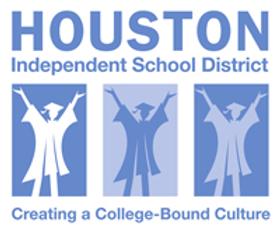Dallas Independent School District is one of the largest school districts in the United States. In recent years, it has received plenty of publicity regarding its high dropout rates, which reached the seventh-highest figures in the country in 2008. The numbers are even more concerning since the districts with higher dropout rates than Dallas tend to be in much smaller cities. Since those numbers were released, the district has been implementing programs to reduce the dropout rate, and thus far, schools are seeing a measurable amount of success.
A Brief History of Dallas Independent School District
Schools in the Dallas area were officially coordinated into the Dallas school district in 1884. This came at the same time a statewide system for public schooling was established, breaking the state into individual school districts, each assigned a unique number and system of governance that was accountable to state overseers.
Like other southern school districts, the Dallas Independent School District went through an extended period of segregation, designating some schools for black students and others for white students. Desegregation began in 1960, according to Wikipedia, six years after the Supreme Court’s ruling on Brown v. Board of Education. The desegregation process was completed in Dallas in 1967. In 1996, the Dallas Independent School District went through a major rezoning upheaval that again moved many students into different schools based on the new zoning boundaries.
Since then, the number of white students in Dallas has slowly and steadily dropped. This fact can be attributed to the availability of private schools and “white flight,” where white families fled the school district as rezoning rules took effect. Today’s demographics from the district's website indicate that more than half of the Dallas Independent School District student body is Hispanic, and another 24 percent are African-American. Less than five percent of the student population is white, with smaller proportions of Asian and Native American students.
This video looks at one of the reasons for low graduation rates.
Dropout Rates in Dallas
Beginning in the latter years of the 20th century, dropout rates for Dallas students began concerning many educators, lawmakers and parents in the city. Between 1998 and 2008, less than half of all 9th graders in the Dallas Independent School District went on to earn diplomas by the end of high school. Since 2008, the district has implemented new programs and strategies to improve those numbers.
The district website states that the number of graduates in the Class of 2011 was 7,149, which is the highest number of graduates the school district has seen since 1983. In addition, the website states that its completion rate (number of students graduating from Dallas schools) is around 88 percent today, which is just four below the average completion rate for the state. Five years ago, the district was 13 points below the state average.
According to Dallas News, graduation increases have been significantly pronounced at specific schools across the district, including Madison, Roosevelt, and South Oak Cliff High Schools. Nearly all of the high schools in Dallas showed some gain in graduation numbers, with just a handful actually going down in their graduation rates between 2010 and 2011.
“These figures show that Dallas ISD has made very good strides during the last four years,” Superintendent of Dallas Independent School District Mike Miles told Dallas News. “My goal is for all staff, parents and the community to continue to build on this success by getting more students to graduate and better prepare them for college and the workforce.”
To that end, Miles has introduced Destination 2020, a three-year plan to improve district performance overall. The plan will include a focus on the following areas:
- Effective teachers in classrooms, with effective principals overseeing the schools
- A professional and efficient central office for the district
- Additional involvement by parents and the community
- Expanding leadership density throughout the Dallas Independent School District
More specifically, the district has added programs to enhance student success, such as early college high schools that allow high-performing students to get a leg up on their college credits toward an associate degree even before high school graduation. The district states that programs like these motivate students to complete their high school education. It also encourages them to pursue postsecondary education after high school by giving them a taste of the college experience early on.
This video offers an interview with the Dallas Independent School District Superintendent.
Dallas ISD and College Readiness
Although more students are graduating from Dallas schools, they may not be as ready for the hallowed college halls as they should be. Dallas News distinguishes between college readiness and graduation rates cited by the Dallas Independent School District. According to the publication, students in the district are not performing adequately on basic math and reading tests, with just under 70 percent of students scoring at grade level for reading and only 55 percent scoring at grade level in math. Also, of the 69 percent of Dallas students who took college entrance examinations, only 10 percent of those students scored what was considered to be in the “college-ready” range.
Despite those rather dismal numbers, as many as half of all Dallas Independent School District graduates attend postsecondary institutions. What is unknown is how many of those students actually complete a degree program. While the Dallas school district is making great strides in ensuring more students earn their high school diploma, it appears much more work must be done to ensure those same students can enroll in and even complete postsecondary education.
Questions? Contact us on Facebook. @publicschoolreview















